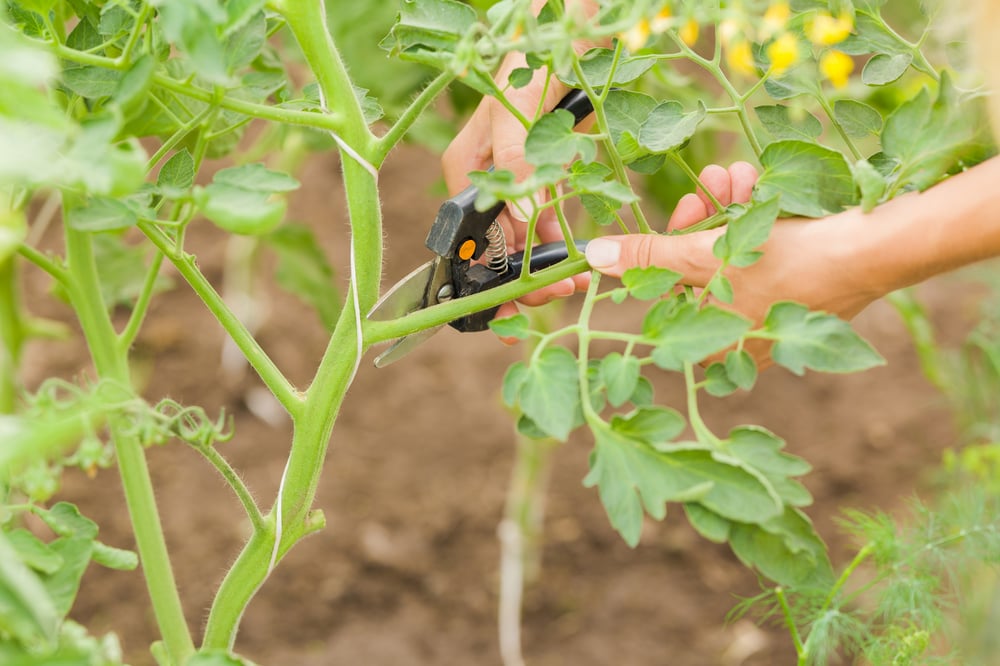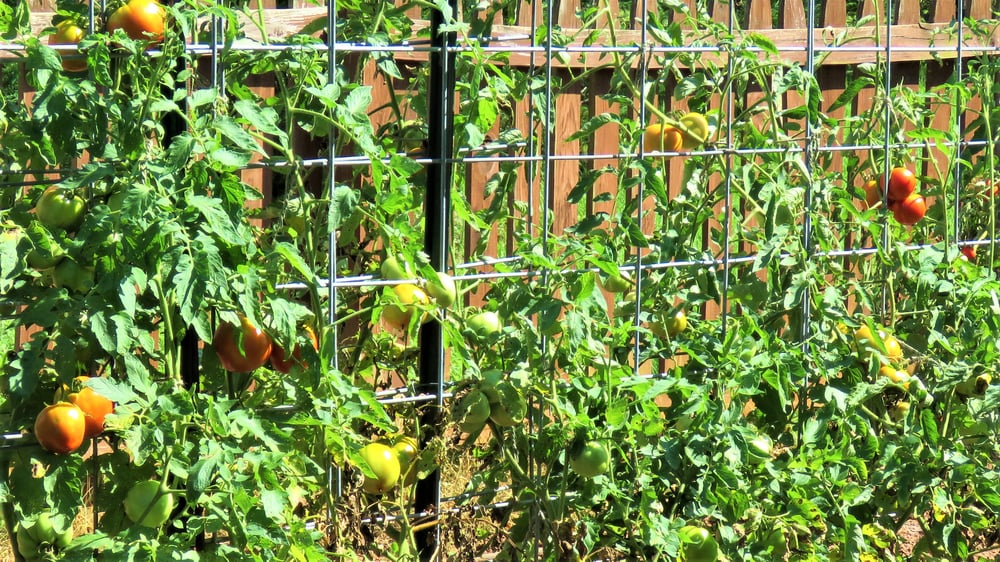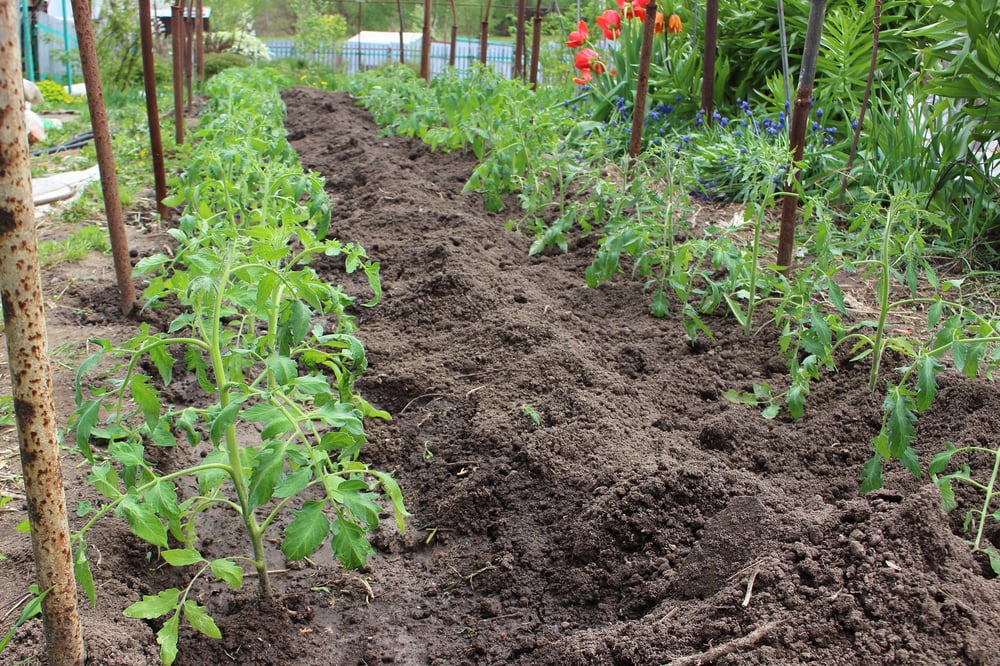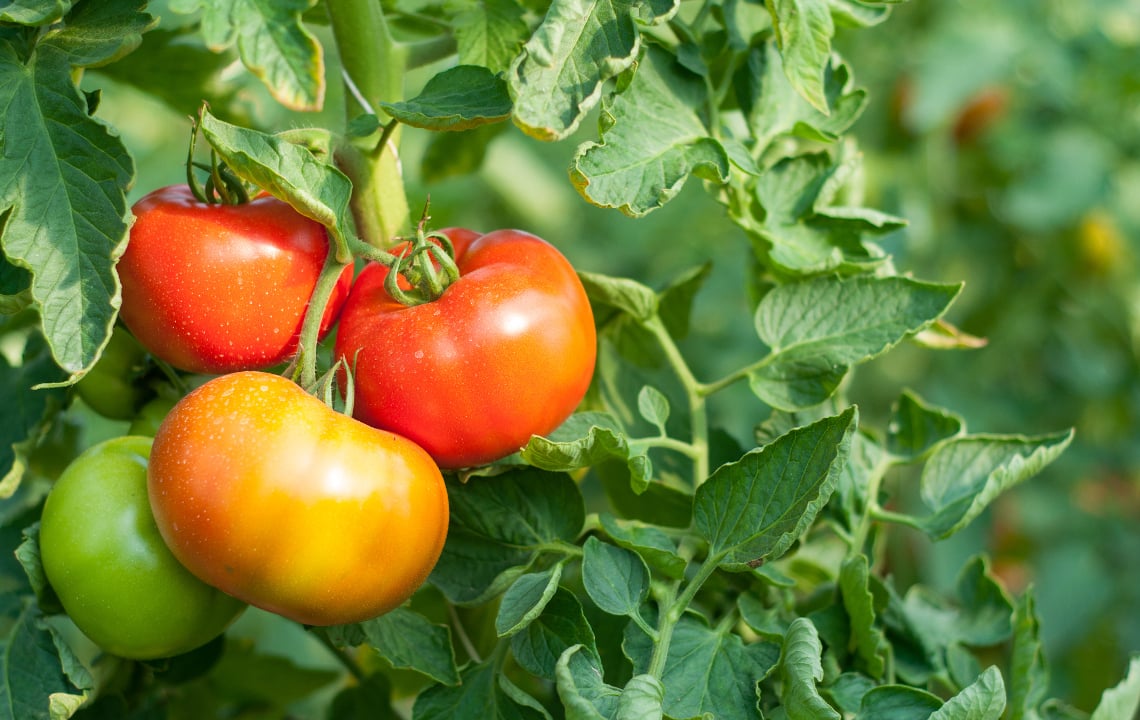The southeast is the perfect place for growing a beautiful and abundant tomato crop. However, there are some best practices for growing tomatoes down south. A seasoned gardener (and tomato lover) shares his best tips for growing outstanding tomatoes.
Growing tomatoes is not rocket science, but here are a few basic tips to help you on the road to a superior crop. These are easy tips that may be incorporated into your agricultural knowledge to ensure the best of healthy eating.
Tip #1: Initial Planting
One secret to successfully growing tomatoes is a simple guideline for the initial planting technique.
Plant tomatoes deep!
I use post-hole diggers to dig very deep holes to plant tomatoes. The bottom limbs should be snipped off. On young, tender plants, they may be pinched off easily.
Tomato plant stems will form roots on the part covered by soil, and this makes your plants much more resistant to dry weather.
Tip #2: Prune Plants as They Grow

The suckers that grow between the stems and the branches should be pruned as the plant grows.
These suckers will not produce quality fruit and sap the strength that would otherwise go toward producing larger, superior tomatoes.
With the increasing prices of nursery-grown plants, there is a trick to increasing your number of plants.
The suckers may be placed into the soil and kept well-watered for several days. They will root and produce fruit throughout the season. These plants will sometimes be as productive as the purchased plants.
The lower limbs of plants should be pruned away.
In addition, the rain or irrigation will splash water up onto the limbs causing dieback due to fungus from the soil contaminating them.
Tip #3: Trellis, Stakes, or Other Support
Determinate plants are plants that grow for a period, and most fruit develops simultaneously.
Indeterminate plants will grow throughout the summer and continue to produce tomatoes.
Determinate species are stronger, stockier plants and will not need as much support.
Indeterminate plants will grow very large and need more support to keep the plant off the ground.
If indeterminate plants are allowed to fall onto the ground, it will encourage insect damage, decay and make it difficult to cultivate.
Support may be provided by using a trellis, stakes or other methods.
After struggling with stakes for several years, I found that using cattle panels (16 feet long, 5 feet high) was much easier.
These panels allow the limbs of indeterminate plants to be spread out rather than bunched up around a stake.
When tying plants up to support, use soft twine or material of large diameter that will not cut or damage the stem.

Tip #4: Fertilization
I read many publications and suggestions about “special” fertilizers, but I have planted tomatoes for years using basic fertilizer with a nitrogen, phosphorus and potassium ratio of 5-10-10 or 10-10-10 and have realized abundant harvests.
When planting in deep holes, I add 1 to 2 ounces of granulated fertilizer to the hole, cover it with soil, and then plant the tomato seedling.
By the time the roots grow into the fertilizer, the fertilizer has become assimilated into the soil and does not burn or damage the roots.

Tip #5: Cultivation and Water
Plant in rows that are easy to access with your tiller or hand cultivation method.
Large weeds may be hand-pulled (hands are still one of the best gardening tools ever created).
Watering may be achieved by simple irrigation techniques, but I prefer soaker hoses. This provides water to the roots and the loss to evaporation is minimized.
Tip #6: Harvesting
Tomatoes are delicate and bruise easily. Be gentle when harvesting and if possible, harvest in the early morning while the fruit is cool.
Don’t pile too many into a container to avoid bruising, as they are quite heavy.
If they are to be used soon, lay them on a flat surface, stem side down in a cool area.
Bon appétit.
Wondering what to do with all those tomatoes after harvest? Check out: Five Food Preservation Methods To Help Extend Your Summer Enjoyment.




.jpg)




















